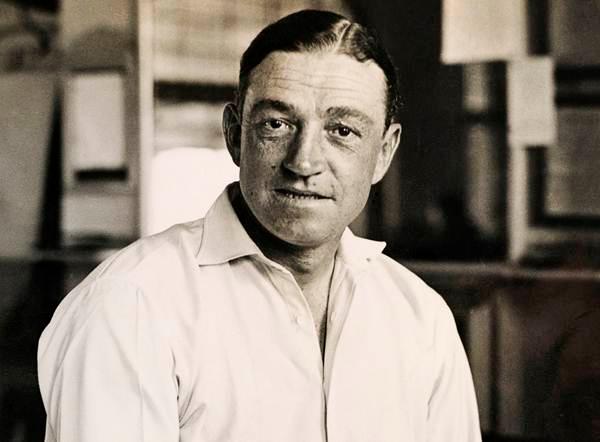19 Facts about Walter Hammond that you should know
View : 1.4K
2 Min Read


Cricket history would have been completely different if not for the legends of the yesteryears like WG Grace and Walter Hammond. Playing first-class cricket from 1920 he redefined the way cricket was being played. His movement and footwork was poised and graceful even during his last games. Not only was he an excellent batsman, his bowling and slip fielding made him simply invaluable to the team during the Bradman era. Let us look at few facts that made Walter Reginald “Wally” Hammond who he was.
1. Birth:
Walter Hammond was born on June 19, 1903 at Buckland, Dover in Kent, United Kingdom.
2. Childhood:
Wally Hammond’s father Willia was a corporal in the Royal Garrison Artillery and his mother was Marion Hammond.
3. His stay in Malta:
His family was posted in Hong Kong and in 1914 they were transferred to Malta. Hammond played cricket in Malta using improvised equipment, including a soldier’s old bat which he believed taught him to strike the ball powerfully.
4. Schooling:
He finished his education from Cirencester Grammar School. During his education he aced across sports like football, athletics and not to mention cricket. He played football for the school first eleven in his first term; later made into the school team in the second term and soon became the captain.
5. Gloucestershire calling:
Hammond planned to go to Winchester Agricultural College but his headmaster wrote to the Gloucestershire captain to take him. Even though Hammond excelled in many sports, it was cricket where he found his interest and got a call from Gloucestershire as soon as he finished is schooling.
6. Football passion:
The athlete that he was, he couldn’t resist playing just one sport. During cricket’s off-season, Hammond played for Bristol Rovers in Division Three. He just played for three seasons before taking cricket as a full-time profession.
7. County debut:
He made his first-class debut for Gloucestershire in August 1920. He could just manage 27 runs in the four innings he batted but the local media saw a great future for him.
8. Banned for a year in county:
Hammond played great cricket for Gloucestershire for few matches but later the issue that he was born in Kent became a controversy and he was to be banned for the remainder of the season, at the behest of Lord Harris. This was unfair due to the fact Hammond had completed the two-year residential criteria to play for Gloucestershire.
9. He captained ‘the Gentlemen and the Players’
In the 20th century, the professional and amateur cricketers were divided by a great barrier. His mother allowed him to become a professional. In 1938, Hammond declared himself an amateur as he was appointed director at a corporate tournament the previous year. As a result, he was made the captain of the English side the following year during the era where this onus fell on amateurs.
10. Rivalry with Sir Donald Bradman:
It is said that Hammond would have been the greatest batsman of his era if not for Bradman. With statistics of 7249 runs in 85 Tests at an average of 58.45 with 22 tons he was on record to be a legend of this era but Don Bradman eclipsed all his records with a mind-boggling average of 99.94 and 29 tons in his career. Hammond couldn’t accomplish his dream to become the greatest batsman and overcoming Bradman and he was once heard to have said, “F*** Bradman!”
11. Test cricket’s highest score:
In 1933, Hammond smashed 336* against New Zealand in Auckland, beating the then world record held by the Aussie Bradman of 334. This became a story in the cricketing folklore.
12. His personal alliances with many women:
Simon Briggs of The Telegraph had once said Wally Hammond was the ‘Hugh Hefner of interwar cricket’. He was first married to Dorothy, the daughter of a wealthy textile merchant and he had numerous mistresses even then.
13. Move to South Africa:
After retirement, he tied the knot with Sybil Ness-Harvey and then moved to Durban, South Africa as she was based there.
14. Comeback game:
Four years after he hung his gloves Walter was called back to play for Gloucestershire. In the comeback game against Somerset, he struggled a lot and couldn’t make much contact with the ball. Horace Hazell, one of the Somerset bowlers, even bowled full-tosses. “When Wally could do nothing with them, I shed private tears,” the bowler said. He could just garner 7 runs in the innings.
15. Coaching:
Hammond later started coaching the cricket team of the University of Natal in South Africa.
16. His stint with the Gloucestershire selection team:
After his coaching experience in South Africa, he returned to England as part of a drive to recruit new members for Gloucestershire but it didn’t yield much results. On the M.C.C. tour of South Africa in 1964–65, he joined the England dressing room, becoming popular with the players.
17. Death:
Death beckon Hammond at the age of 62 in 1965 due to a heart-attack. It was sad because his family wasn’t well-to-do and the cricketing community came together to launch the Walter Hammond Memorial Fund.
18. Bradman’s testimonial:
After Hammond’s death, Bradman, his rival said, “During his era Wally Hammond was undoubtedly England’s greatest cricketer. I am very distressed to hear of the need for the Hammond Memorial Appeal Fund and feel sure cricket lovers will generously respond.”
19. Wisden’s Obituary:
Wisden, the World’s best account on cricket quotes on Hammond, “a most exciting cricketer. … The instant he walked out of a pavilion, white-spotted blue handkerchief showing from his right pocket, bat tucked underarm, cap at a hint of an angle, he was identifiable as a thoroughbred.”
Download Our App